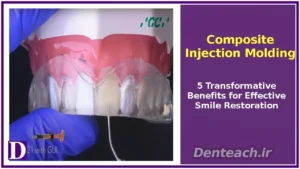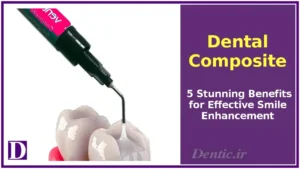
Table of Contents


Composite Injection Molding: 5 Transformative Benefits for Effective Smile Restoration

Dental Composite: 5 Stunning Benefits for Effective Smile Enhancement

Teeth Bleaching: 5 Radiant Benefits for Effective Smile Brightening

Dental Veneer: 5 Stunning Benefits for Effective Smile Enhancement

Implant-Supported Fixed Prostheses: 5 Advanced Benefits for Effective Smile Restoration

Teeth Cleaning: The Foundation of Preventive Dental Care
Teeth cleaning, also known as dental prophylaxis or professional cleaning, is a cornerstone of preventive dentistry performed by dental hygienists or dentists to maintain oral health. By removing plaque, tartar (calculus), and surface stains, this routine procedure prevents dental issues like cavities and gum disease, affecting over 90% and 50% of adults, respectively, according to the CDC. Teeth cleaning promotes fresh breath, enhances smile aesthetics, and allows early detection of oral health problems. This article explores the definition, components, benefits, process, frequency, aftercare, challenges, and future trends of teeth cleaning, emphasizing its critical role in oral hygiene.
Defining Teeth Cleaning
Teeth cleaning is a non-invasive, preventive dental procedure aimed at removing plaque—a sticky bacterial film—and tartar, its hardened form, from tooth surfaces, including below the gumline. Conducted in a dental office, it complements daily brushing and flossing, targeting areas inaccessible to at-home care. The process includes scaling, polishing, and optional fluoride treatment, alongside oral health assessments. With regular cleanings, patients reduce the risk of gum disease, cavities, and other complications, maintaining healthy teeth and gums. Teeth cleaning is suitable for all ages, supporting lifelong oral health with a 95% effectiveness in preventing early-stage gum disease.
Components of Teeth Cleaning
Teeth cleaning involves several key steps:
- Scaling: Removes plaque and tartar from tooth surfaces and below the gumline. Manual scaling uses hand instruments like scalers and curettes for precision, while ultrasonic scaling employs vibrating tips and water to dislodge deposits efficiently.
- Polishing: Uses a rotating tool with gritty prophylaxis paste to remove surface stains and smooth teeth, reducing plaque adhesion. Polishing enhances aesthetics and creates a slick surface for oral hygiene.
- Oral Examination: Includes periodontal probing to assess gum health and check for pocket depths (normal: 1–3 mm) and visual inspections for cavities, enamel wear, or abnormalities.
- Fluoride Treatment (Optional): Applies fluoride gel or varnish to strengthen enamel, reducing cavity risk by 20–30% in high-risk patients.
- Patient Education: Provides guidance on brushing techniques, flossing, and dietary choices to optimize oral health between visits.
Benefits of Teeth Cleaning
Dentures
Teeth cleaning offers significant advantages:
- Gum Disease Prevention: Removes plaque and tartar, reducing gingivitis and periodontitis risk by up to 60%, per the American Dental Association (ADA).
- Cavity Prevention: Eliminates bacterial deposits, lowering cavity incidence, which affects 26% of U.S. adults.
- Fresh Breath: Targets bacteria causing halitosis, improving breath quality for 80–90% of patients.
- Early Detection: Identifies early signs of decay, gum disease, or oral cancer, enabling timely intervention.
- Aesthetic Enhancement: Removes stains from coffee, tea, or tobacco, enhancing smile brightness and confidence.
Indications for Teeth Cleaning
Teeth cleaning is recommended for:
- Routine Prevention: Maintaining oral health in individuals with no active dental issues.
- Gum Disease Signs: Red, swollen, or bleeding gums indicating gingivitis or early periodontitis.
- Staining or Discoloration: Surface stains from diet or lifestyle affecting smile aesthetics.
- Bad Breath: Persistent halitosis linked to bacterial buildup.
- High-Risk Conditions: Patients with diabetes, smoking history, or orthodontic appliances requiring frequent cleanings.
The Teeth Cleaning Process
The teeth cleaning process is efficient and patient-focused:
- Consultation and Assessment: The dental professional evaluates oral health using visual exams, periodontal probes, and X-rays to identify plaque, tartar, or gum issues.
- Scaling: Plaque and tartar are removed using manual or ultrasonic tools, targeting above and below the gumline. The process takes 20–40 minutes, depending on buildup severity.
- Polishing: Teeth are polished with prophylaxis paste and a rotating tool to remove stains and smooth surfaces, taking 5–10 minutes.
- Fluoride Treatment (Optional): Fluoride is applied via gel, foam, or varnish for 1–2 minutes to strengthen enamel.
- Patient Education: The hygienist provides tailored advice on brushing (twice daily), flossing, and diet to maintain results.
- Follow-Up Planning: A schedule for future cleanings (every 6–12 months) is recommended based on oral health needs.
Frequency of Teeth Cleaning
- Standard Schedule: Most patients benefit from cleanings every 6 months to prevent plaque buildup and monitor oral health.
- Individualized Plans: Patients with periodontal disease, diabetes, or heavy tartar buildup may require cleanings every 3–4 months, as 10–15% of adults have advanced gum disease.
- Pediatric Needs: Children may need cleanings every 6–12 months, adjusted for orthodontic or developmental factors.
Aftercare and Maintenance
Maintaining results post-cleaning is essential:
- Oral Hygiene: Brush twice daily with fluoride toothpaste and floss or use interdental brushes to prevent plaque accumulation.
- Regular Check-Ups: Schedule dental visits every 6 months for cleanings and exams to detect issues early.
- Dietary Choices: Limit sugary foods and drinks to reduce bacterial growth and cavity risk.
- Avoid Staining Agents: Reduce coffee, tea, red wine, and tobacco to maintain tooth brightness.
- Oral Health Tools: Use tools like water flossers or antiseptic mouthwashes for enhanced hygiene, especially with braces or restorations.
Challenges and Considerations
Challenges include:
- Discomfort: Mild sensitivity or gum soreness occurs in 10–20% of patients post-scaling, resolving within 1–2 days.
- Cost: Cleanings cost $75–$200 in the U.S., though insurance often covers preventive visits.
- Time Commitment: Sessions last 30–60 minutes, requiring regular scheduling.
- Patient Compliance: Success depends on maintaining at-home hygiene, as 30% of patients develop plaque buildup between visits.
- Specific Conditions: Patients with deep periodontal pockets may need additional treatments like scaling and root planing.
Future Trends
Teeth cleaning is evolving with technology:
- Advanced Ultrasonics: Next-generation ultrasonic scalers improve efficiency and reduce discomfort.
- Laser-Assisted Cleaning: Lasers target bacterial deposits with minimal invasiveness, enhancing gum health.
- Bioactive Pastes: Polishing pastes with remineralizing agents strengthen enamel during cleaning.
- AI Diagnostics: AI-driven tools analyze periodontal data for personalized treatment plans.
Conclusion
Teeth cleaning is a vital preventive procedure that removes plaque, tartar, and stains, promoting oral health and preventing dental issues. Through scaling, polishing, fluoride treatments, and patient education, it ensures healthy teeth and gums while enhancing smile aesthetics. With proper aftercare and innovations like laser cleaning and bioactive materials, teeth cleaning remains a foundation of dental care. Patients should consult a certified dentist or visit American Dental Association for personalized cleaning schedules.
- American Dental Association. (2025). Dental Cleanings.
- American Academy of Periodontology. (2025). Non-Surgical Treatments.
- Sanz, M., et al. (2017). Non-surgical periodontal therapy: A review. Journal of Clinical Periodontology, 44(Suppl 18), S17–S27.
- American Dental Association. (2025). Oral Health and Prevention.
